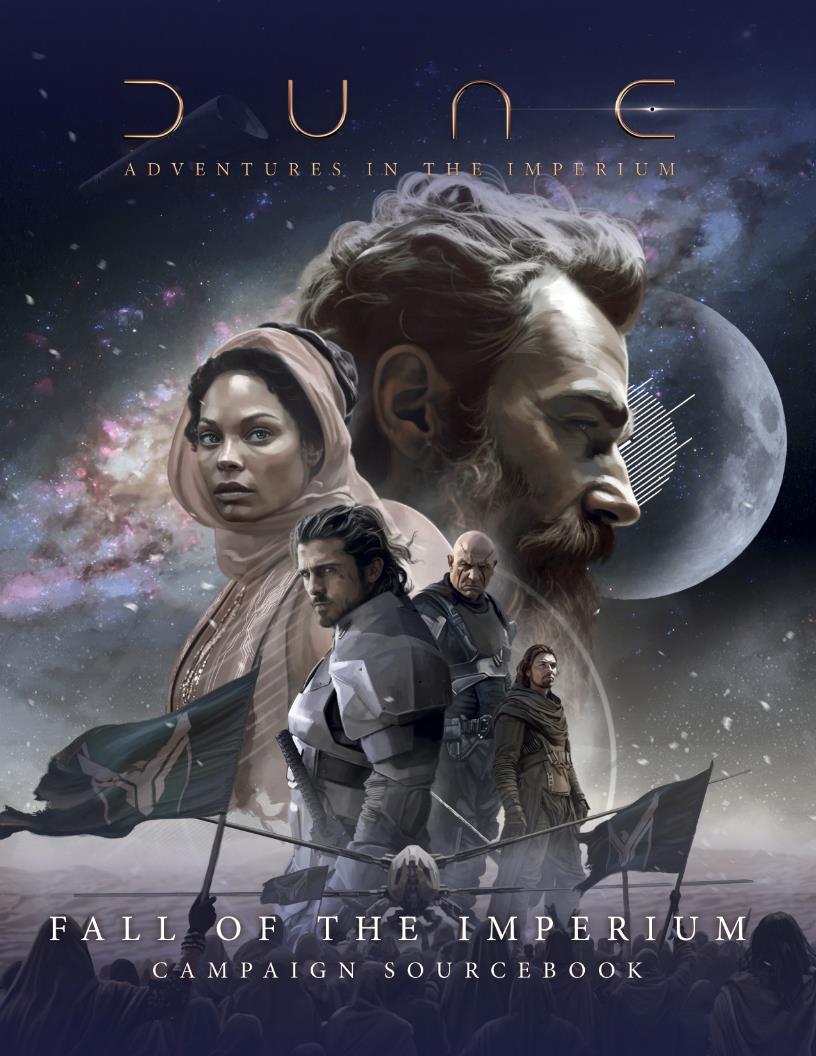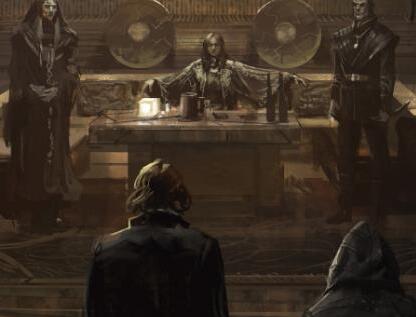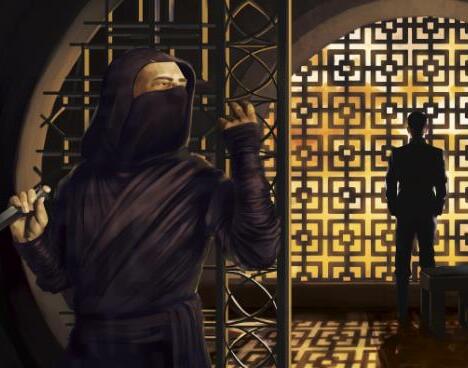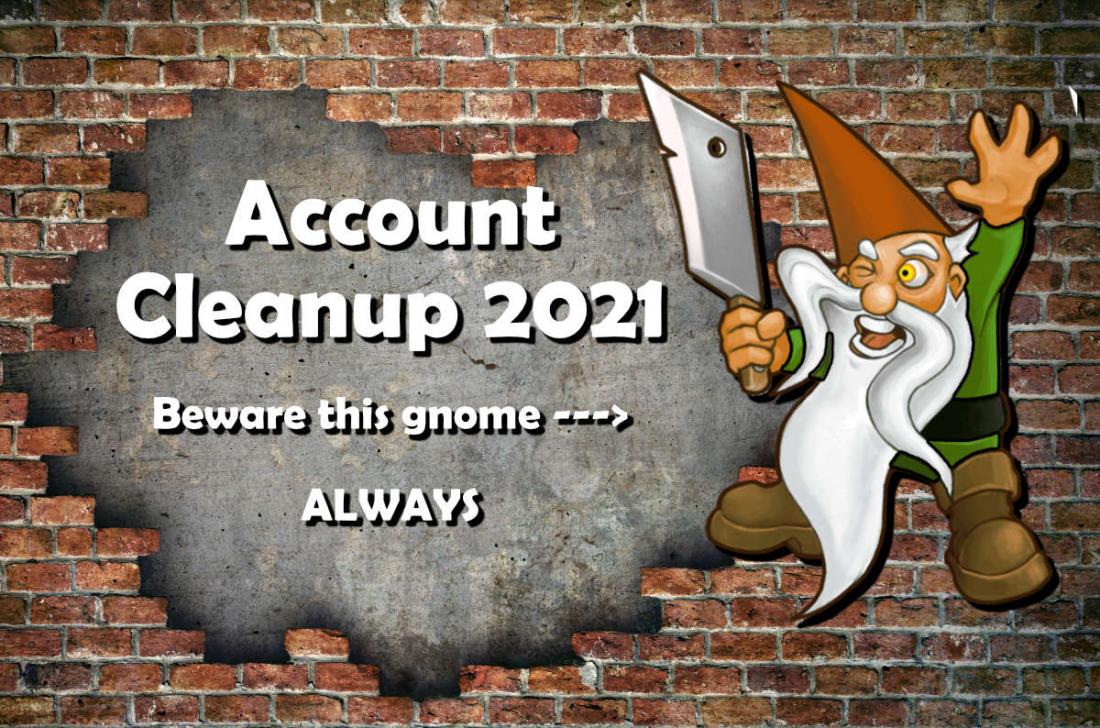
Licensed games usually take the approach of presenting material that can happen far away from the canon events of the setting. This works especially well in settings like Star Trek or Star Wars, where there is a literal galaxy of locations available for storytelling. Player characters may hear about canon events, and there may be a butterfly effect on some of their options, but the assumption of the game is that the player characters aren’t going to be directly confronting and potentially contradicting the fictitious history of the setting.
Despite this, there are some fans who want exactly that. If they are playing in a game about a given setting, they want to be present for the events they have read about or seen on screen. They may or may not want to step into the shoes of an existing character, either by playing that character, or by playing a character that replaces the canon character in the game table’s narrative. If you want to play through a campaign where it’s possible for Luke Skywalker to miss the shot that destroys the Death Star because a PC failed to keep a TIE Fighter off his tail, that’s largely on the game facilitator to navigate.
Modiphius has taken an interesting approach to this with their Dune: Adventures in the Imperium RPG. While it largely assumes that player characters will be engaging in house politics in other corners of the galaxy or touching upon Arrakis in moments between galaxy shaking events, it has also introduced products that directly engage the canon narrative. The primary example of this has been the Agents of Dune boxed set, which places the player characters and their house in the place of House Atreides, inheriting Dune from the Harkonnens by decree of the emperor.
The adventure we’re looking at today also places player characters directly in the path of galactic history, presenting a campaign that takes place just before, during, and in the aftermath of Paul Atreides’ takeover of the imperial throne.
Dune: Fall of the Imperium
Creative Lead Andrew Peregrine
Line Editor/Canon Editor Rachel J. Wilkinson
Writing Richard August, Simon Berman, Jason Brick, Jason Durall, Keith Garrett, Jack Norris, Andrew Peregrine, Dave Semark, Hilary Sklar, Devinder Thiara, Mari Tokuda, Rachel J. Wilkinson
Graphic Design Chris Webb, Leigh Woosey, Jen Mccleary
Art Direction Rocío Martín Pérez
Cover Artist David Benzal
Interior Artwork Artists Amir Zand, Joel Chaim Holtzman, János Tokity, Simone Rizzo, Jakub Kozlowski, Carmen Cornet, Eren Arik, Hans Park, Mikhail Palamarchuk, Mihail Spil-Haufter, Lixin Yin, Susanah Grace, Alexander Guillen Brox, Imad Awan, Louie Maryon, Justin Usher, Jonny Sun, Olivier Hennart, Pat Fix, Avishek Banerjee, Bastien Lecouffe-Deharme, Simone Rizzo
Proofreading Stuart Gorman
Project Management Daniel Lade
Brand Management Joe Lefavi for Genuine Entertainment
Disclaimer
I am not working from a review copy of this product and did not receive a review copy to work from. I have received review copies from Modiphius Entertainment in the past. I have not had the opportunity to play or run this adventure. I do have a familiarity with the 2d20 system, having run and played multiple iterations of the rules.
Layout and Design
I am working from a PDF of the adventure. The adventure is available as a PDF or a physical book. Additionally, there is a Roll20 version of the adventure for sale. The PDF is 146 pages long. The content of those pages breaks down to this:
- Covers–2 pages
- Inside Front Cover Art–1 page
- Company Title Page–1 page
- Product Title Page–1 page
- Credits Page–1 page
- Table of Contents–1 page
- Shuttle Map–1 page
- Map of Arrakeen–1 page
- Modiphius Product Ads–3 pages
There is some glorious artwork in this book, and the design of most of the outfits, vehicles, architecture, etc. match the recent movies. While this book assumes the continuity of the original novels, the licensing is all bound together, meaning they don’t have to reinvent the wheel when it comes to producing artwork. The pages are in a light parchment color, with geometric flourishes under the text. There is artwork throughout, especially depicting notable characters. Each of the chapters starts with a two-page spread of full color art.
The layout varies depending on the purpose of the text. Most of the adventure is in a two-column layout, but background material and overviews are formatted in centered text boxes or single columns that run down the middle of the page. Sidebars are often in the lower right- or left-hand side of the page.
The Judge of the Change
This adventure is the framework for an entire campaign, if you couldn’t glean that from the introduction. The book itself is broken into the following sections:
- Introduction
- Act I: The Gathering Storm
- Act II: Muad’Dib
- Act III: Fall of the Imperium
- Act IV: War Across a Million Worlds
- Adventures in the Era of Muad’Dib
Adventures in the Era of Muad’Dib is a section that details the kind of setting assumptions that should be considered for playing the RPG during the establishment of Paul’s reign. This includes the differences between the chaos and violence of that era, contrasted against the political maneuvering and quick betrayals of the previous era.
Each act of the campaign has its own set of acts, which are the primary adventures that characters will engage with as that leg of the campaign progresses. This means that within all four acts, there are three adventures, each with their own three acts.
While I mentioned the Agents of Dune campaign boxed set above, unlike that product, these adventures assume that the events of the novels happen when and how they are detailed in the source material. There are a few notes on what might happen if the GM and the players want to deviate from the story, but most sections assume that the path of history rolls forward unabated.
 Who Are You?
Who Are You?
The PCs are playing agents of their own house, managing their interests in light of emerging events. For several parts of the campaign, this means you’ll be dealing with the cascading effects of galactic history, rather than being right next to it. However, there are several places where the adventure narrows back down to canon events so the PCs can be present as witnesses.
There is an interesting sidebar at the beginning of the adventure which I both agree with and think oversimplifies the situation, especially when it’s applied to the players and the decisions they are making. The sidebar mentions that both Paul and the Harkonnens are nobles whose people toil for the profit of their rulers, and that while the Harkonnens are vicious and violent in their tactics, Paul starts a war that kills billions of people. All on board with “Paul isn’t the Good Guy.” But it also frames this as “there are no villains,” which, no, that’s harder to take. Paul isn’t the good guy because of the repercussions of his actions, but it is hard to say that the Harkonnens aren’t villains. I think it’s pretty easy to conceive of a story where there are no heroes, only villains, rather than saying there are no heroes or villains.
Part of why this sidebar exists, however, is to reinforce the concept that making decisions for a House in the Landsraad often means choosing between multiple bad options. If the PCs ally with the Harkonnens for a time, they aren’t suddenly the villains of the story, they may just be doing something very distasteful for them in order to help their house survive. There are several places in the narrative where characters have the option of throwing in with different houses against other houses, which means being allied doesn’t always mean being long term friends or business partners.
As agents of a Landsraad House, there are a combination of missions you can undertake for the betterment of your house, which also happens to give you insight into the greater events unfolding. For example, trying to secure a hidden smuggler’s cache of spice after the Atreides take over Arrakis lets you stumble upon some Harkonnen records that may lead you to the hidden base of operations of a Sardukar agent, and so on.
While the adventure has several places where events unfold at a distance from the events of the novels, there are a few key places where the PCs are funneled back into the main narrative. These include:
- The night House Atreides falls
- The Death of Rabban
- The Death of Leto II
- The sequence of Paul’s ascension to the throne and all the events surrounding it
If you read “The Death of Leto II,” and thought, wait, I don’t want to be there for that, I completely understand. That particular aspect of the adventure kind of underscores some of the problems the adventure has whenever it funnels the PCs back to major canon events. It’s very clear you are pushed into those events to witness them. If you play the adventure as written, you are sent with the Sardukar on their raid of the sietch, and you arrive at the scene just after Leto II has been killed.
In many of the “up close to history” scenes, your characters are rolling to avoid getting in anyone’s way and hoping to pick up some things beneficial to your house on the periphery of bigger events. One exception to this is the death of Rabban. The PCs have several paths to this point, but almost all of them involve someone wanting them to kill Rabban in the lead up to the most tumultuous events preceding Paul’s ascension.
This would be a really neat, “that was your characters!” moment, except there are still some heavy handed sections where his location is a bait and switch, so you must encounter Feyd, and you can’t kill Rabban all by yourselves, Gurney Halleck will show up and either try to do it before you, or help you out.
 The Wide-Open Galaxy
The Wide-Open Galaxy
Act II is especially open compared to the rest of the adventure. Your characters are negotiating for spice as Harkonnen production slows. You chase spies on a ski resort planet. You skulk around backwaters looking for blackmail information and encrypted documents. In one of my favorite moments in the adventure, your characters navigate a night of betrayal that is both thematically calling back to the attack on House Atreides, but both more subtle and distinct. It’s one of those places where it really feels like the adventure delivers you a very “Dune” experience without just using canon Dune events.
Act IV is strange. While it deals with events we know happened, broadly, i.e. Paul’s crusade ravaging worlds that failed to show their loyalty, the places where these adventures take place generally don’t have a lot of canon surrounding them, meaning that the PCs actions can have greater effect. The downside is that in many cases, the reason they are in the path of these events is very thin. In several cases, Paul issues an imperial decree for the PCs to go to a place, where they may work against his agents, and the next time they see Paul, “he sees something in their future that keeps him from acting against them,” and then they can go somewhere else and either discreetly or overtly defy him.
The culmination of the entire adventure/campaign is that a House that has long been associated with the PCs’ House is accused of treason. The PCs can find out what is going on, disassociate themselves from their allies or exonerate them, and determine who to screw over and who to align themselves with to keep one of Paul’s lieutenants from declaring their House as an enemy of the throne.
Mechanical Resolution
An aspect of the adventure that I really enjoy is that it leans into the 2d20 concept of creating traits. If you aren’t familiar with traits in a 2d20 game (which have slightly different names depending on the 2d20 game in question), they function in a manner similar to Fate aspects. They are a broad description of something that is true. Depending on the narrative, traits either grant narrative permission to do something that wouldn’t be possible if the trait weren’t active, or it adds or subtracts from the difficulty of a task if it is relevant to that task.
Depending on how the PCs resolve different scenes in the adventure, they may acquire different traits, which will be available for use either by the PCs or the GM if they are still active. For example, in many cases, PCs that ally with a house will gain a trait that denotes that they are “Ally of House X,” and any time that’s relevant, it might make a check either more or less difficult. They may also gain traits that reflect their reputation; for example, if they resolve a scene by hiding, they may get a “Cowardice” trait, which might come into play whenever dealing with characters that are proud of their martial accomplishments.
There are also events that remove traits. For example, early in the adventure, it’s a lot easier for the PCs to pick up the “Ally to House Harkonnen” trait, which they may end up shedding if, later in the adventure, they advocate for the emperor to strip them of their rights to Arrakis.
Like Star Trek Adventures, Dune: Adventures in the Imperium makes provisions for a player running characters other than their primary character, usually in circumstances where the PCs wouldn’t want to personally be involved in the activities they are directing. This is separate from, but adjacent to, Architect play, where PCs can say they are using resources from a distance to manipulate events, making checks for broad actions they are taking, to influence events.
 For example, if a character has troops as one of their resources, and there have been smugglers raiding their holdings, they could use Architect mode to send troops to take care of the smugglers without ever going to that location, rolling to see how well their orders are carried out versus the difficulty of the outcome they want. The downside to Architect play being that it’s hard to get specific granular results. In the example above, you might be able to get rid of the smugglers, but the GM may tell you that unless you show up yourself, you can’t expect your troops to capture a smuggler alive for interrogation.
For example, if a character has troops as one of their resources, and there have been smugglers raiding their holdings, they could use Architect mode to send troops to take care of the smugglers without ever going to that location, rolling to see how well their orders are carried out versus the difficulty of the outcome they want. The downside to Architect play being that it’s hard to get specific granular results. In the example above, you might be able to get rid of the smugglers, but the GM may tell you that unless you show up yourself, you can’t expect your troops to capture a smuggler alive for interrogation.
There are a few places in the adventure where broader goals are mentioned as something the PCs might attempt with Architect mode, usually in the periphery of events that surround the political maneuvering in Act II. There are also a few brief mentions of using supporting characters during certain events, especially if the player character in question isn’t a particularly martial specimen, and they tackle a mission like killing Rabban.
Because these are excellent tools, I wish the adventure had spent more time expanding how they could be used to greater effect in various scenes. While I don’t think any scene where the PCs have most of their agency removed is going to be fun to sit through, I could see several of the “you must go this direction” encounters being easier to swallow if those scenes were expressly meant to be carried out by secondary character operatives. I suspect that this wasn’t done in part because the adventure wants your primary PCs to be present at these major events, not just a character you are playing.
Having a few lines referencing, “they could get X, likely through Architect play,” isn’t nearly as satisfying as a more detailed list of resources or events that the PCs could undertake that had a direct effect on the narrative and the position of their house in each act.
Aftermath
When I first saw there was a section on Adventures in the Era of Muad’Dib, I was thinking something along the lines of the one-page mission briefs from Star Trek Adventures. This is, more precisely, tools and mechanics available to reflect the differences in the galaxy after Paul’s ascension to the throne and the spread of his religion. It introduces the faction template for the Qizarate, as well as six new talents that are either tied to that faction or involve interaction with Paul directly.
While there aren’t “mission brief” style adventures, there are sections on what resistance to the throne looks like in this era, some of the espionage that might be going on, and a few adventure seeds surrounding interacting with Paul, the adherents of his faith, and the changing allegiances in the Imperium. These are generally short, one paragraph long descriptions.
I feel like you’re either going to have some frustrating moments as written, or you’re going to be reworking some key scenes so that the PCs have actual agency in those moments
The Mystery of Life Isn’t a Problem to Solve, But A Reality to Experience
I really appreciate the ambition of this adventure. It really shines in Act II, and a bit in Act IV, where the PCs have lots of options available to them, and the main thing that is determined by canon are the stakes they are navigating. I absolutely love the Night of Slow blades section of the adventure, because it hits that sweet spot of “this is tailored for your PCs” and “this feels like exactly what would happen in the novels.” There are also some other scenes across various acts that shine. While not everyone may take the road that leads to this, I really liked the details of negotiating with Baron Harkonnen, as well as the scenes where the PCs can debate with other agents of the Landsraad houses in court with the emperor.
An Animal Caught in A Trap Will Gnaw Off Its Own Leg to Escape. What Will You Do?
I wish that when the adventure pushes the PCs into “witness” mode, there was more for them to do than observe and make a few checks to see if they pick up a new trait or asset for themselves or their house. There are some brushes with canon events early on that feel especially frustrating. You may get into a fight with Rabban the night of the Atreides attack, but he’s got plot armor. You might see Jessica and Paul being herded onto an ornithopter in the distance, but you’re too far away to do anything about it. The absolute worse example of this is being present for Leto II’s death. I don’t expect the adventure to give you the opportunity to stop this from happening–it’s a pretty pivotal story beat. But I don’t know that my desire to witness the noteworthy events of Dune included helplessly traveling with the people that murder Paul’s infant son.
Tenuous Recommendation–The product has positive aspects, but buyers may want to make sure the positive aspects align with their tastes before moving this up their list of what to purchase next.
I don’t want to be too brutal. I think that if you are a fan of Dune (and I’m not sure why you would be buying Dune RPG material if you weren’t) you will find some use for this adventure. On the other hand, I feel like you’re either going to have some frustrating moments as written, or you’re going to be reworking some key scenes so that the PCs have actual agency in those moments. That’s a shame, because there are some wonderful moments in the adventure that tie the PCs and their house to events with a little more room to breathe, that would be great to see attached to an adventure that didn’t funnel you back into your front row seats for a show you can’t really affect.
















